springboot2 + grpc + k8s + istio
项目情况说明:
ubuntu - 16.04
java - openjdk:8
springboot - 2.2.2.RELEASE
mysql - 5.7
mongodb - 4.0.14
redis - 3.0.6
grpc - grpc-spring-boot-starter - 2.6.1.RELEASE
项目目录:
mypro -
device - 调用数据库,grpc客户端
lib - 公共库
person - 调用数据库,grpc服务端
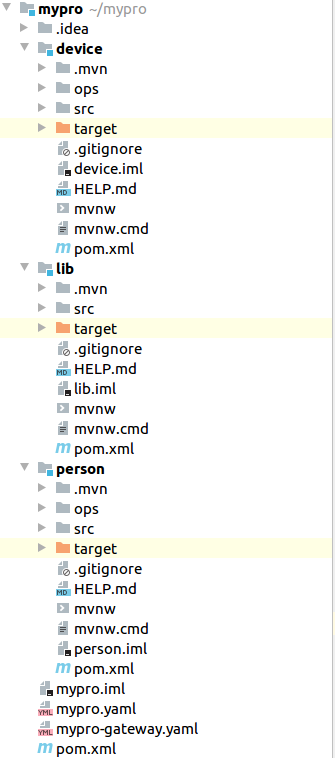
项目启动:
步骤一:项目建立
之所以从这里开始,因为我之前纠结过多模块项目的建立...
IDE我使用的是IDEA
1.1、建立主目录mypro
新建文件夹mypro,在IDEA中依次选择:file -- New -- Project,弹出框选择Spring Initializr,点击Next。

注意红框区域,选择Maven POM,其它可以自己填
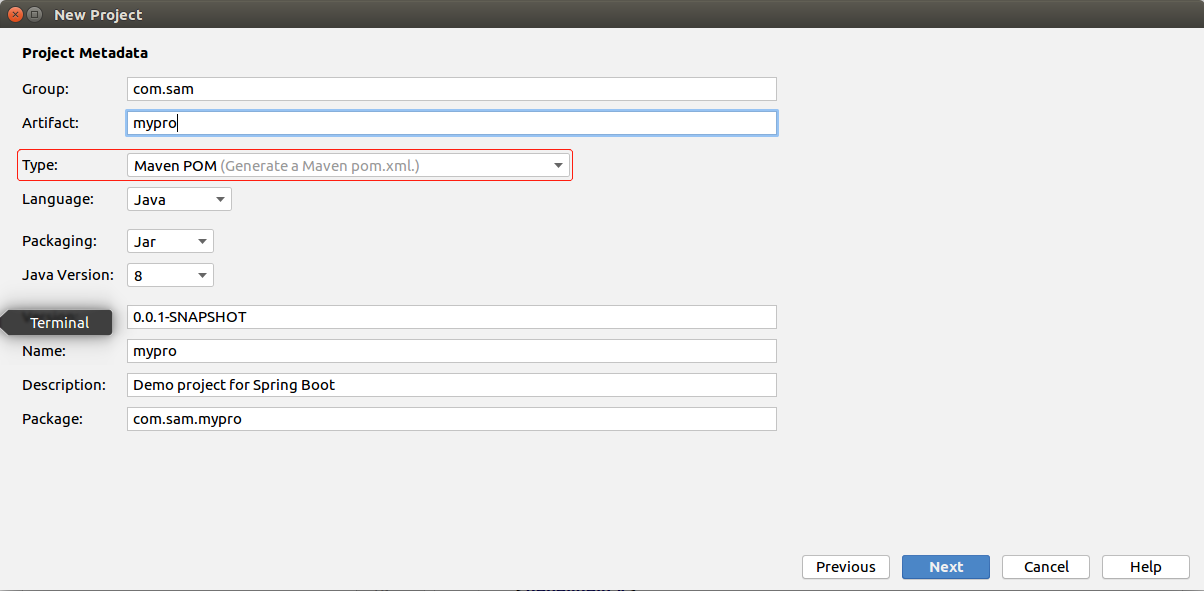
又弹出一个框来,什么也不选,直接Next
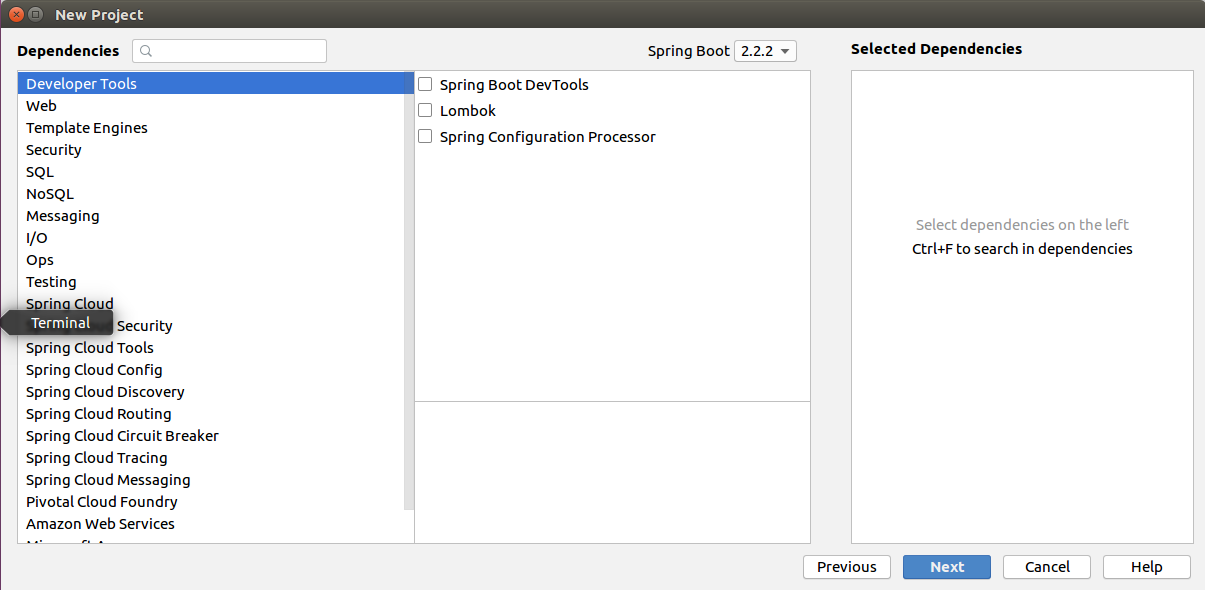
选择地址(刚才新建的mypro文件夹)
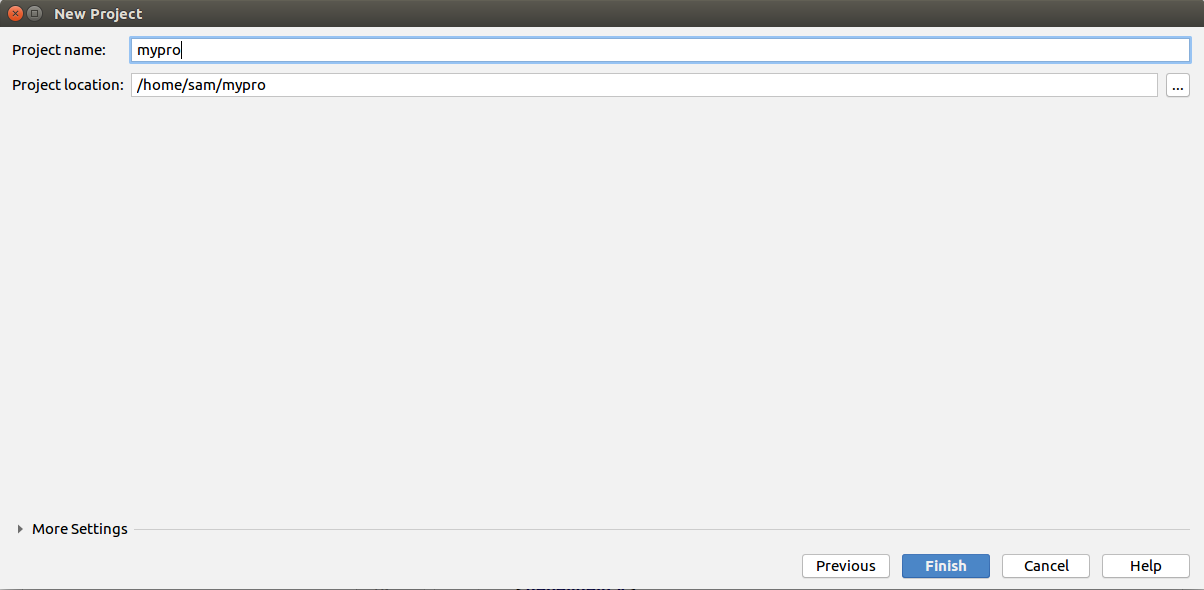
至此,新建主目录结束
1.2、建立子目录
右键单击主目录mypro,选择New,选择Module

选择Spring Initializr,直接Next
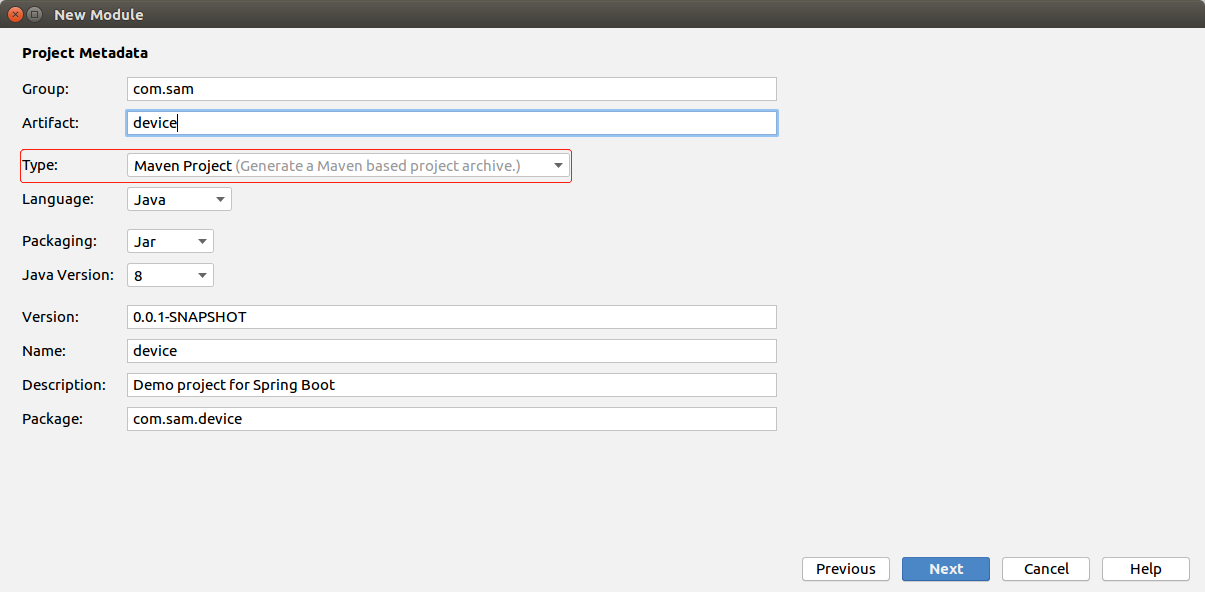
注意这里红框选择了Maven Project,其他可以自己填,填完Next
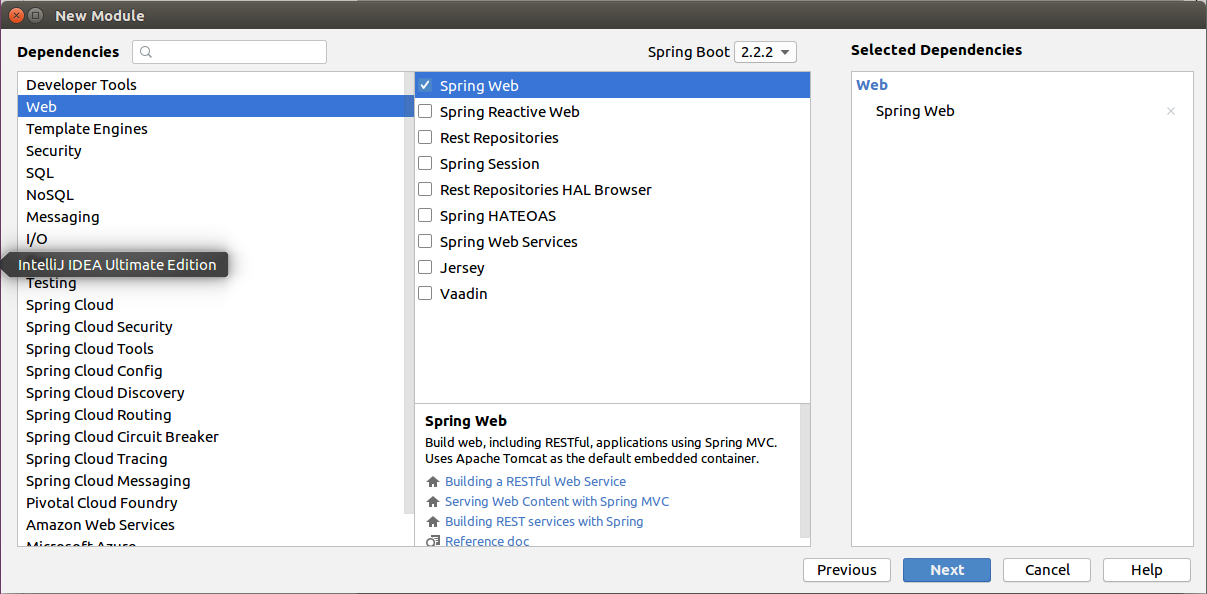
便于测试,这里选择了Spring Web,点击Next,弹出框直接Next就创建成功了
至此,第一个子模块建立成功,按照上面的步骤依次建立其它子模块,我这里建立了lib和person。
1.3、调整pom配置
主模块:去掉依赖,引入子模块,注意<packaging>pom</packaging>打包时会用到
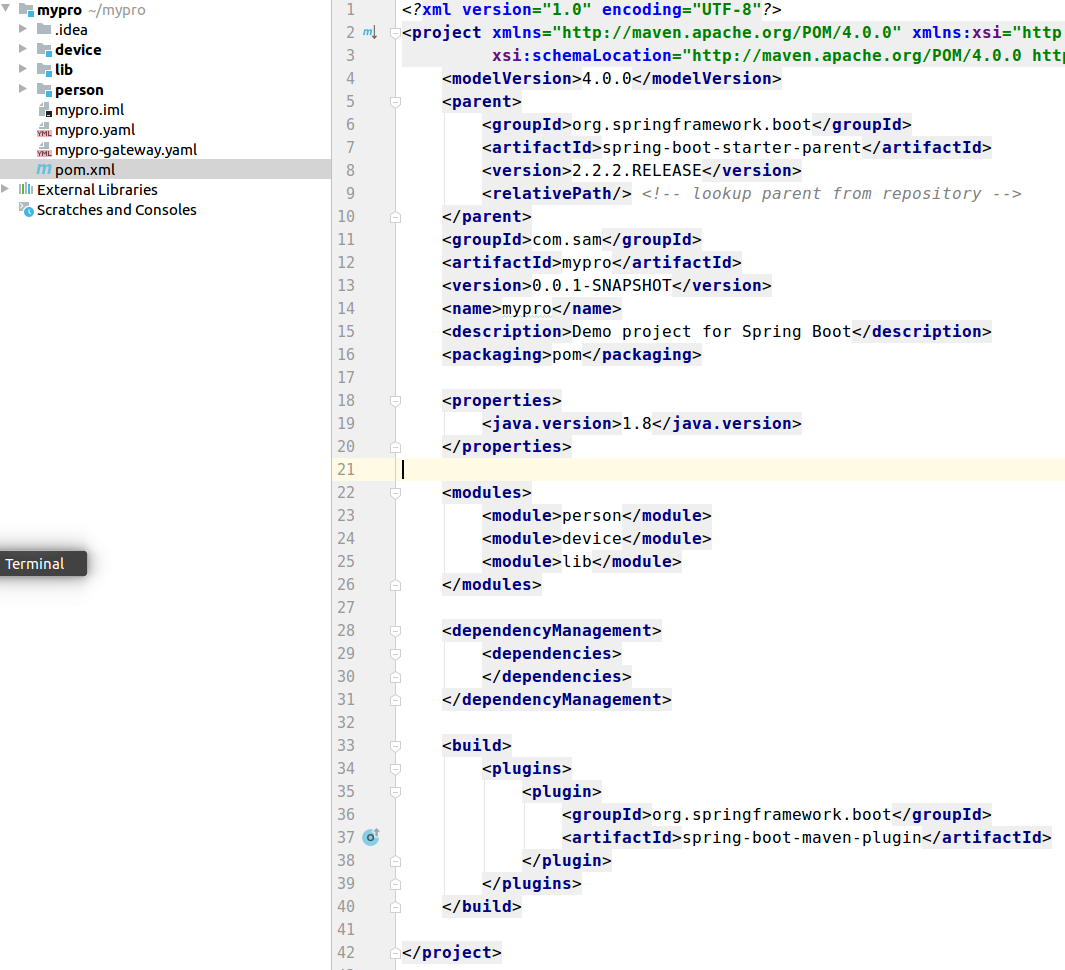
简单处理,把所有的依赖都由lib公共库引入,device和person模块引入lib公共库
首先修改lib模块:<parent>使用了主模块的内容,直接复制过来即可,注意<packaging>jar</packaging>
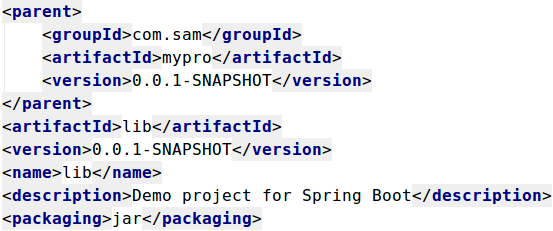
修改device模块:<parent>使用了主模块的内容,直接复制过来即可,注意<packaging>war</packaging>

引入lib

peron模块同上。
至此,项目建立完成。
步骤二:项目相关依赖
1.1、mysql
CREATE TABLE `user` (
`name` char(16) NOT NULL,
`age` int(11) DEFAULT NULL,
`password` char(64) NOT NULL,
`id` char(64) NOT NULL,
PRIMARY KEY (`id`)
) ENGINE=InnoDB DEFAULT CHARSET=utf8
device | CREATE TABLE `device` (
`id` char() NOT NULL,
`name` char() NOT NULL,
`code` char() DEFAULT NULL,
PRIMARY KEY (`id`)
) ENGINE=InnoDB DEFAULT CHARSET=utf8
使用的是mybatis-plus和代码生成器
<dependency>
<groupId>mysql</groupId>
<artifactId>mysql-connector-java</artifactId>
<scope>runtime</scope>
</dependency> <dependency>
<groupId>com.baomidou</groupId>
<artifactId>mybatis-plus-boot-starter</artifactId>
<version>3.3.</version>
</dependency>
<dependency>
<groupId>com.baomidou</groupId>
<artifactId>mybatis-plus-generator</artifactId>
<version>3.3.</version>
</dependency> <dependency>
<groupId>org.apache.velocity</groupId>
<artifactId>velocity-engine-core</artifactId>
<version>2.1</version>
</dependency>
代码生成器:(我放在test中,加注释的改成自己的就可以)
import org.springframework.boot.test.context.SpringBootTest;
import com.baomidou.mybatisplus.annotation.DbType;
import com.baomidou.mybatisplus.generator.AutoGenerator;
import com.baomidou.mybatisplus.generator.config.DataSourceConfig;
import com.baomidou.mybatisplus.generator.config.GlobalConfig;
import com.baomidou.mybatisplus.generator.config.PackageConfig;
import com.baomidou.mybatisplus.generator.config.StrategyConfig;
import com.baomidou.mybatisplus.generator.config.rules.NamingStrategy;
import org.junit.jupiter.api.Test; @SpringBootTest
public class CodeGenerator { @Test
public void generateCode() {
String packageName = "com.sam.person"; // 当前的包
boolean serviceNameStartWithI = true;
generateByTables(serviceNameStartWithI, packageName);
} private void generateByTables(boolean serviceNameStartWithI, String packageName) {
GlobalConfig config = new GlobalConfig();
// 改成自己的
String dbUrl = "jdbc:mysql://127.0.0.1:3306/test?useUnicode=true&characterEncoding=utf-8&useLegacyDatetimeCode=false&serverTimezone=UTC";
DataSourceConfig dataSourceConfig = new DataSourceConfig();
// 用户名和密码
dataSourceConfig.setDbType(DbType.MYSQL).setUrl(dbUrl).setUsername("root").setPassword("123456").setDriverName("com.mysql.cj.jdbc.Driver");
StrategyConfig strategyConfig = new StrategyConfig();
strategyConfig.setCapitalMode(true).setEntityLombokModel(false)
.setNaming(NamingStrategy.underline_to_camel)
.setInclude("user"); // 对应数据库表名,表要先创建
config.setActiveRecord(false).setAuthor("sam") // 作者
.setOutputDir("/home/sam/mypro/person/src/main/java") // 路径,到/java就可以
.setFileOverride(true)
.setEnableCache(false);
if (!serviceNameStartWithI) {
config.setServiceName("%sService");
}
new AutoGenerator()
.setGlobalConfig(config)
.setDataSource(dataSourceConfig)
.setStrategy(strategyConfig)
.setPackageInfo(new PackageConfig()
.setParent(packageName)
.setController("controller")
.setEntity("entity.Do"))
.execute();
}
}
不熟悉test的,可以放在如图这里,注意person有一个,device也要有一个,包和路径内容要调整下。
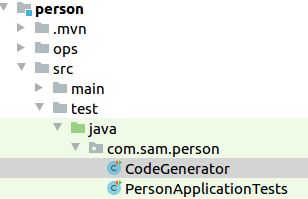
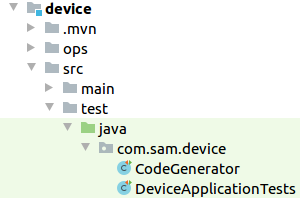
生成的结构与下图类似:

注意给启动类上加MapperScan: @MapperScan("com.sam.device.mapper"),person同理。
没有config,是后加的,application.yml见后。
开放远程连接:(重要)
https://www.cnblogs.com/zhangkaiqiang/p/6646488.html
1.2、mongodb
可参考我另一篇随笔
https://www.cnblogs.com/SamNicole1809/p/12097182.html
开放远程连接:(重要)(参考,主要是需要设置bind-ip: 0.0.0.0,并重启服务)
https://www.cnblogs.com/jinxiao-pu/p/7121307.html
1.3、redis
可参考我另一篇随笔
https://www.cnblogs.com/SamNicole1809/p/12097440.html
开放远程连接:(重要)
https://blog.csdn.net/mr_oldcold/article/details/81026928
1.4、yml配置
黄色标注的根据自己情况填,没有可以不填,host填主机的Ip,不是localhost或127.0.0.1,部署时要用,这也是为什么要把所有数据库的远程连接都打开的原因。
spring:
datasource:
username: root
password: 123456
url: jdbc:mysql://host:3306/test?useUnicode=true&characterEncoding=utf-8&useLegacyDatetimeCode=false&serverTimezone=UTC
redis:
host: host
password: 123456
jedis:
pool:
max-active: 8
max-idle: 8
max-wait: -1ms
min-idle: 0
data:
mongodb:
uri: mongodb://sam:123456@host:27017/test
至此,数据库部分结束。
1.5、grpc
请参考我另一篇随笔:(需要注意的是,device的yml在部署时需要修改address中的内容)
https://www.cnblogs.com/SamNicole1809/p/12201227.html
1.6、测试controller
device的:
import com.sam.device.entity.Do.Device;
import com.sam.device.service.grpc.DeviceGrpcService;
import com.sam.device.service.impl.DeviceServiceImpl;
import com.sam.lib.utils.MongoUtils;
import com.sam.lib.utils.RedisUtils;
import com.sam.lib.utils.StringUtils;
import com.sam.lib.utils.TestUtils;
import org.bson.Document;
import org.springframework.web.bind.annotation.GetMapping;
import org.springframework.web.bind.annotation.RequestMapping; import org.springframework.web.bind.annotation.RestController; import java.util.UUID; /**
* <p>
* 前端控制器
* </p>
*
* @author sam
* @since 2020-01-13
*/
@RestController
@RequestMapping("/device")
public class DeviceController { private final TestUtils testUtils;
private final DeviceServiceImpl deviceService;
private final RedisUtils redisUtils;
private final MongoUtils mongoUtils;
private final DeviceGrpcService deviceGrpcService; public DeviceController(TestUtils testUtils, DeviceServiceImpl deviceService, RedisUtils redisUtils, MongoUtils mongoUtils, DeviceGrpcService deviceGrpcService) {
this.testUtils = testUtils;
this.deviceService = deviceService;
this.redisUtils = redisUtils;
this.mongoUtils = mongoUtils;
this.deviceGrpcService = deviceGrpcService;
} @GetMapping("/get")
public String getDevice() {
return StringUtils.getResult(testUtils.setLabel("Device"));
} @GetMapping("/mysql")
public String setMysql() {
Device device = new Device();
device.setId(UUID.randomUUID().toString());
device.setCode("123456");
device.setName("device-dev");
boolean flag = deviceService.save(device);
if (flag) {
return device.toString();
}
return "Save device error";
} @GetMapping("/redis")
public String setRedis() {
redisUtils.vSet("name", "device");
String name = redisUtils.vGet("name").toString();
return "Redis write success, name is " + name;
} @GetMapping("/mongo")
public String setMongo() {
Document doc = new Document();
String mid = UUID.randomUUID().toString();
doc.put("mid", mid);
doc.put("name", "device");
mongoUtils.insertOne("device", doc);
Document query = new Document();
query.put("mid", mid);
Document result = mongoUtils.findOne("device", query);
return "Mongo write success, result is " + result.toString();
} @GetMapping("/grpc")
public String setGrpc() {
String result = deviceGrpcService.getUser("device");
if ("".equals(result)) {
return "Result is blank";
}
return result;
}
}
person的:
import com.sam.lib.utils.MongoUtils;
import com.sam.lib.utils.RedisUtils;
import com.sam.lib.utils.StringUtils;
import com.sam.lib.utils.TestUtils;
import com.sam.person.entity.Do.User;
import com.sam.person.service.impl.UserServiceImpl;
import org.bson.Document;
import org.springframework.beans.factory.annotation.Autowired;
import org.springframework.web.bind.annotation.GetMapping;
import org.springframework.web.bind.annotation.RequestMapping; import org.springframework.web.bind.annotation.RestController; import java.util.UUID; /**
* <p>
* 前端控制器
* </p>
*
* @author sam
* @since 2020-01-13
*/
@RestController
@RequestMapping("/user")
public class UserController { private final TestUtils testUtils;
private final UserServiceImpl userService;
private final RedisUtils redisUtils;
private final MongoUtils mongoUtils; public UserController(TestUtils testUtils, UserServiceImpl userService, RedisUtils redisUtils, MongoUtils mongoUtils) {
this.testUtils = testUtils;
this.userService = userService;
this.redisUtils = redisUtils;
this.mongoUtils = mongoUtils;
} @GetMapping("/get")
public String getUser() {
return StringUtils.getResult(testUtils.setLabel("User"));
} @GetMapping("/mysql")
public String setMysql() {
User user = new User();
user.setId(UUID.randomUUID().toString());
user.setName("sam");
user.setAge(31);
user.setPassword("123456");
boolean flag = userService.save(user);
if (flag) {
return user.toString();
}
return "Save user error";
} @GetMapping("/redis")
public String setRedis() {
redisUtils.vSet("name", "person");
String name = redisUtils.vGet("name").toString();
return "Redis write success, name is " + name;
} @GetMapping("/mongo")
public String setMongo() {
Document doc = new Document();
String mid = UUID.randomUUID().toString();
doc.put("mid", mid);
doc.put("name", "device");
mongoUtils.insertOne("device", doc);
Document query = new Document();
query.put("mid", mid);
Document result = mongoUtils.findOne("device", query);
return "Mongo write success, result is " + result.toString();
}
}
至此,依赖部分结束。
步骤三:搭建k8s和istio环境
请参考我另一篇随笔:
https://www.cnblogs.com/SamNicole1809/p/12172887.html
步骤四:项目打包
1.1、跳过测试
在所有子模块的pom文件中增加:<skipTests>true</skipTests>
<properties>
<java.version>1.8</java.version>
<skipTests>true</skipTests>
</properties>
1.2、修改lib的pom
注释掉原有的用于build,使用下面的build
<build>
<plugins>
<plugin>
<groupId>org.springframework.boot</groupId>
<artifactId>spring-boot-maven-plugin</artifactId>
<configuration>
<classifier>exec</classifier>
</configuration>
</plugin>
</plugins>
</build>
1.3、打包
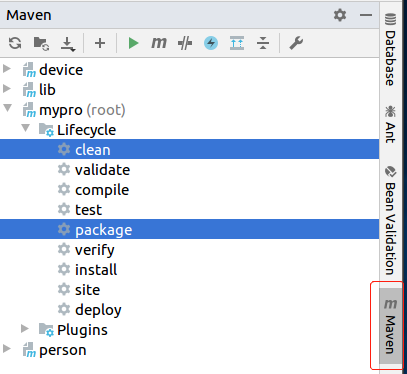
使用maven,一次执行mypro下的Lifecycle中的clean和package,会在person和device的target目录下生成war包,并自动处理关于lib的依赖问题。
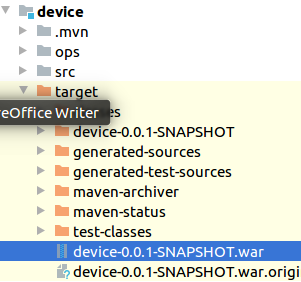
至此,项目打包完毕。
步骤五:部署
请确保已经参照了k8s和Istio的随笔,环境搭建成功,并能够正常运行,namespace: default开启了istio自动注入功能。
可参考官方文档:
https://preliminary.istio.io/zh/docs/examples/bookinfo/
namespace: kube-system

namespace: istio-system
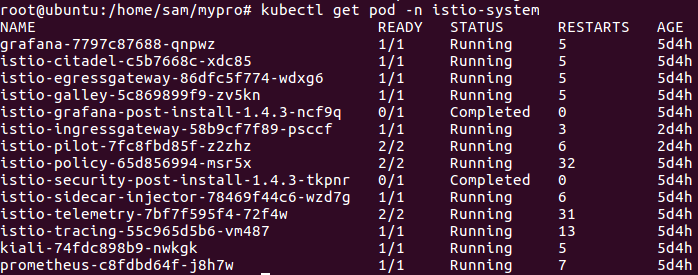
1.1、生成docker镜像
创建文件夹doc,将生成的war包复制到doc文件夹下,并创建文件Dockerfile,没有后缀,注意文件名必须这样
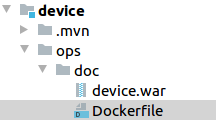
Dockerfile文件内容:
FROM openjdk:8-jdk-alpine
VOLUME /tmp
ARG device
COPY device.war app.war
ENTRYPOINT ["java","-Djava.security.egdod=file:/dev/./urandom","-jar","/app.war"]
这里我把war包改名为device.war了,注意一下。
person同理,将里面的device改为person就好。
生成镜像命令:
名称(黄色标记)建议不要更改,因为yaml文件会用到,以后可以自己改。
docker build -t device-service .
docker build -t person-service .
1.2、添加yaml文件
网关:mypro-gateway.yaml
apiVersion: networking.istio.io/v1alpha3
kind: Gateway
metadata:
name: mypro-gateway
spec:
selector:
istio: ingressgateway # use istio default controller
servers:
- port:
number: 80
name: http
protocol: HTTP
hosts:
- "*"
---
apiVersion: networking.istio.io/v1alpha3
kind: VirtualService
metadata:
name: mypro
spec:
hosts:
- "*"
gateways:
- mypro-gateway
http:
- match:
- uri:
prefix: /user
route:
- destination:
host: person
port:
number: 8080
- match:
- uri:
prefix: /device
route:
- destination:
host: device
port:
number: 8080
deployment和service:mypro.yaml
##################################################################################################
# person service
##################################################################################################
apiVersion: v1
kind: Service
metadata:
name: person
labels:
app: person
service: person
spec:
ports:
- name: http
port: 8080
- name: grpc
port: 9898
protocol: TCP
selector:
app: person
---
apiVersion: v1
kind: ServiceAccount
metadata:
name: mypro-person
labels:
account: person
---
apiVersion: apps/v1
kind: Deployment
metadata:
name: person-v1
labels:
app: person
version: v1
spec:
replicas: 1
selector:
matchLabels:
app: person
version: v1
template:
metadata:
labels:
app: person
version: v1
spec:
serviceAccountName: mypro-person
containers:
- name: person
image: person-service:latest
imagePullPolicy: IfNotPresent
ports:
- containerPort: 8080
name: http
- containerPort: 9898
name: grpc
protocol: TCP
---
##################################################################################################
# device service
##################################################################################################
apiVersion: v1
kind: Service
metadata:
name: device
labels:
app: device
service: device
spec:
ports:
- name: http
port: 8080
- name: grpc
port: 9898
protocol: TCP
selector:
app: device
---
apiVersion: v1
kind: ServiceAccount
metadata:
name: mypro-device
labels:
account: device
---
apiVersion: apps/v1
kind: Deployment
metadata:
name: device-v1
labels:
app: device
version: v1
spec:
replicas: 1
selector:
matchLabels:
app: device
version: v1
template:
metadata:
labels:
app: device
version: v1
spec:
serviceAccountName: mypro-device
containers:
- name: device
image: device-service:latest
imagePullPolicy: IfNotPresent
ports:
- containerPort: 8080
name: http
- containerPort: 9898
name: grpc
protocol: TCP
---
说明一下:
1、9898是grpc端口,8080是person和device的默认端口
2、device中的yml文件需要把address修改如下:(对应的服务名)
address: 'static://person:9898'
1.3、部署
到yaml相关文件目录下执行如下命令:
安装网关:
kubectl apply -f mypro-gateway.yaml
查看:

设置url:(参考官方文档)
echo GATEWAY_URL=$INGRESS_HOST:$INGRESS_PORT
显示你能够访问的url地址,通过这个地址可以访问项目,正常是host:port都有。
部署服务:
kubectl apply -f mypro.yaml
查看:
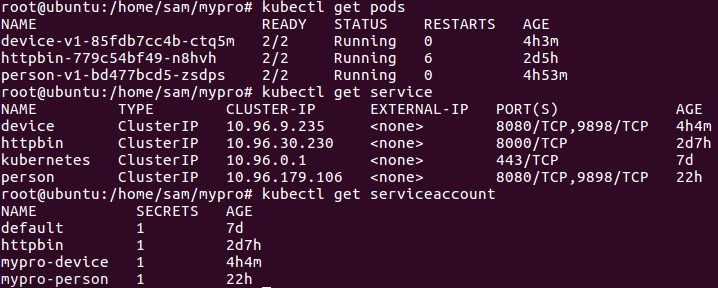
至此项目部署成功。
步骤五:测试
http://host:port/device/get

http://host:port/device/mysql

http://host:port/device/mongo

http://host:port/device/redis

http://host:port/device/grpc

person相同
至此,测试成功。
结语:
我想说的是:
网络的目的在于分享,这个项目是在别人的经验上搭建起来的,我只是做了一个整合。
本文的目的在于帮助刚接触k8s和istio的新人,少采坑。
希望用微服务的人越来越多,把越来越多的资料经验分享出来。
我是一个新手,希望文中有错误的大家请批评指正,以免影响更多的人。
欢迎多多交流。
Git地址:
https://github.com/SamNicole1809/mypro
springboot2 + grpc + k8s + istio的更多相关文章
- k8s+istio:流量控制之灰度发布
通过Kubernetes+Istio的流量控制实现灰度发布,主要演示通过流量权重实现蓝绿,通过http自定义头实现金丝雀 准备环境 k8s和istio不想自己装的话可以在云上买个按量付费集群,用完即删 ...
- ubuntu16.04 docker kubernetes(k8s) istio 安装
版本: docker: 19.03.5 kubernetes: 1.17.0 istio: 1.4.3 步骤一:给ubuntu换源 https://www.cnblogs.com/lfri/p/106 ...
- k8s istio 配置请求的路由规则
使用istio我们可以根据权重和HTTP headers来动态配置请求路由. 基于内容的路由 因为BookInfo示例部署了3个版本的评论微服务,我们需要设置一个默认路由. 否则,当你多次访问应用程序 ...
- springboot2 + grpc
项目情况: springboot: 2.2.2 grpc-spring-boot-starter: 2.6.1.RELEASE 项目目录: mypro: - person - grpc服务端 - l ...
- helm istio k8s docker
helm https://hub.helm.sh/ k8s https://www.kubernetes.org.cn/k8s istio 微服务 https://istio.io/
- Service Mesh服务网格新生代--Istio(转)
万字解读:Service Mesh服务网格新生代--Istio 官网地址:https://preliminary.istio.io/zh/docs/concepts/security/ Servic ...
- 朱晔的互联网架构实践心得S2E4:小议微服务的各种玩法(古典、SOA、传统、K8S、ServiceMesh)
十几年前就有一些公司开始践行服务拆分以及SOA,六年前有了微服务的概念,于是大家开始思考SOA和微服务的关系和区别.最近三年Spring Cloud的大火把微服务的实践推到了高潮,而近两年K8S在容器 ...
- 古典、SOA、传统、K8S、ServiceMesh
古典.SOA.传统.K8S.ServiceMesh 十几年前就有一些公司开始践行服务拆分以及SOA,六年前有了微服务的概念,于是大家开始思考SOA和微服务的关系和区别.最近三年Spring Cloud ...
- 云原生生态周报 Vol. 15 | K8s 安全审计报告发布
业界要闻 CNCF 公布 Kubernetes 的安全审计报告 报告收集了社区对 Kubernetes.CoreDNS.Envoy.Prometheus 等项目的安全问题反馈,包含从一般弱点到关键漏洞 ...
随机推荐
- 判断当前所使用python的版本和来源
import sys print(sys.prefix) print(sys.executable) 怎样判断当前py文件在什么版本的python环境下运行 import sys print(sys. ...
- Python--day46--用户管理设计方案介绍
1,基于用户权限管理: 2,基于角色的权限管理: 开始一个项目如果要100天的,可能70天都在设计,比如设计数据库表结构,最后30天才是写代码.设计是最难的,写代码是最简单的. 还有一个重要的一点,写 ...
- linux inode 结构
inode 结构由内核在内部用来表示文件. 因此, 它和代表打开文件描述符的文件结构是不 同的. 可能有代表单个文件的多个打开描述符的许多文件结构, 但是它们都指向一个单个 inode 结构. ino ...
- P1068 压缩技术
题目描述 设某汉字由N × N的0和1的点阵图案组成. 我们依照以下规则生成压缩码.连续一组数值:从汉字点阵图案的第一行第一个符号开始计算,按书写顺序从左到右,由上至下.第一个数表示连续有几个0,第二 ...
- linux 运行处理者
如同前面建议的, 当内核收到一个中断, 所有的注册的处理者被调用. 一个共享的处理者 必须能够在它需要的处理的中断和其他设备产生的中断之间区分. 使用 shared=1 选项来加载 short 安装了 ...
- vue中的时间修饰符stop,self
stop阻止自身以外的冒泡 self只会阻止自身冒泡
- Servlet 的面试题
Servlet运行在Servlet容器中,其生命周期由容器来管理.Servlet的生命周期通过javax.servlet.Servlet接口中的init().service()和destroy()方法 ...
- 曹工说Spring Boot源码(6)-- Spring怎么从xml文件里解析bean的
写在前面的话 相关背景及资源: 曹工说Spring Boot源码(1)-- Bean Definition到底是什么,附spring思维导图分享 曹工说Spring Boot源码(2)-- Bean ...
- 前端Tips#2 - 将 arguments 转换成Array的最佳实践
本文同步自 JSCON简时空 - 技术博客,点击阅读 视频讲解 文字讲解 1.先讲结论 有很多种方式将 arguments 转换成数组,那么哪一种方式是最优的? 为节约大伙儿的时间,这里先说一下结论: ...
- 分析CPU使用率不断增加的原因
工程中发现引起的问题: 结合别的朋友的意见,我的优化思路是: 1.排查是否内存泄漏 经过反复查询代码,未发现有内存泄漏(可以自己百度搜索C#内存泄漏的原因).可以通过任务管理器分析是否有内存泄漏,打开 ...
